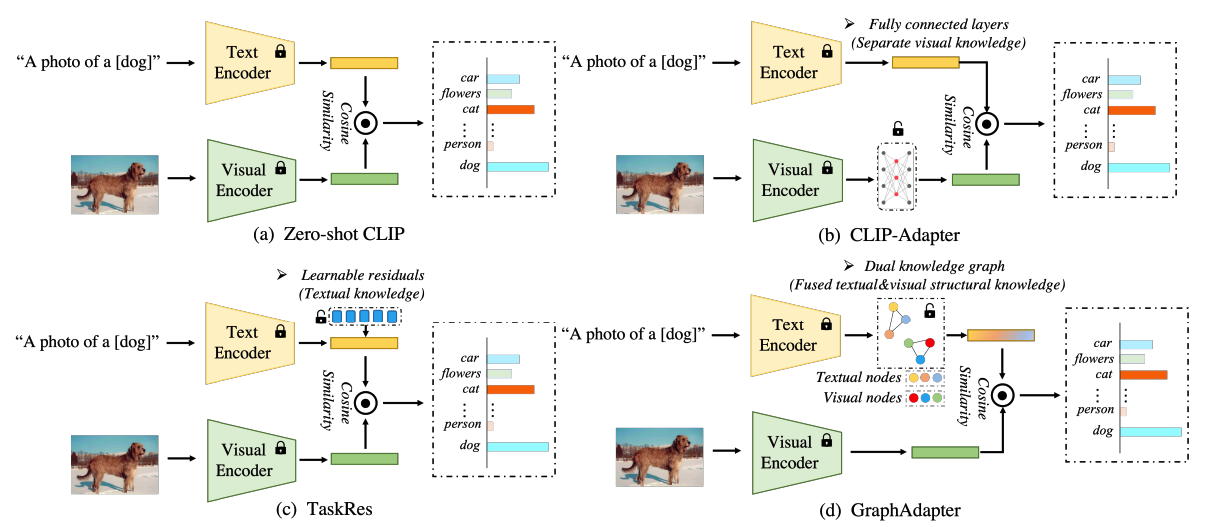GraphAdapter: Tuning Vision-Language Models With Dual Knowledge Graph
Adapter-style efficient transfer learning (ETL) has shown excellent performance in the tuning of vision-language models (VLMs) under the low-data regime, where only a few additional parameters are introduced to excavate the task-specific knowledge based on the general and powerful representation of VLMs. However, most adapter-style works face two limitations: (i) modeling task-specific knowledge with a single modality only; and (ii) overlooking the exploitation of the inter-class relationships in downstream tasks, thereby leading to sub-optimal solutions. To mitigate that, we propose an effective adapter-style tuning strategy, dubbed GraphAdapter, which performs the textual adapter by explicitly modeling the dual-modality structure knowledge (i.e., the correlation of different semantics/classes in textual and visual modalities) with a dual knowledge graph. In particular, the dual knowledge graph is established with two sub-graphs, i.e., a textual knowledge sub-graph, and a visual knowledge sub-graph, where the nodes and edges represent the semantics/classes and their correlations in two modalities, respectively. This enables the textual feature of each prompt to leverage the task-specific structure knowledge from both textual and visual modalities, yielding a more effective classifier for downstream tasks. Extensive experimental results on 11 benchmark datasets reveal that our GraphAdapter significantly outperforms previous adapter-based methods. The code will be released at https://github.com/lixinustc/GraphAdapter
PDF Abstract NeurIPS 2023 PDF NeurIPS 2023 Abstract


 ImageNet
ImageNet
 UCF101
UCF101
 Oxford 102 Flower
Oxford 102 Flower
 Stanford Cars
Stanford Cars
 DTD
DTD
 Food-101
Food-101
 Caltech-101
Caltech-101
 EuroSAT
EuroSAT
 FGVC-Aircraft
FGVC-Aircraft
 ImageNet-R
ImageNet-R
 ImageNet-A
ImageNet-A
 ImageNet-Sketch
ImageNet-Sketch